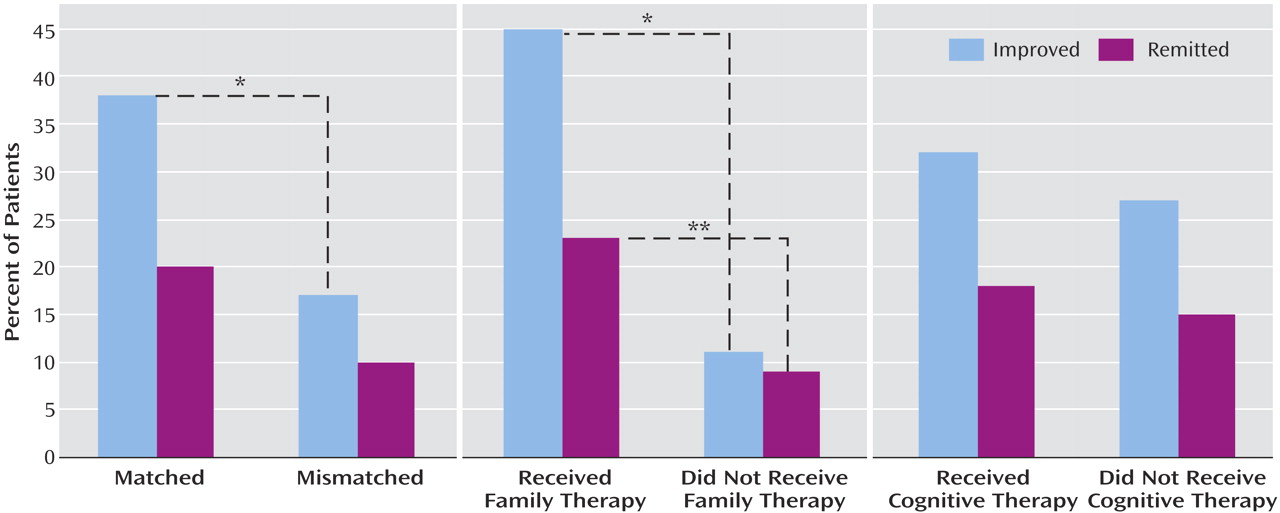Treatment Matching in the Posthospital Care of Depressed Patients
Abstract
Method
Participants
Stratification
Description of Treatment Conditions
Pharmacotherapy
Combined cognitive therapy
Combined family therapy
Combined cognitive and family therapy
Assignment to Treatment
Assessments
Data Analysis
Treatment discontinuation
Treatment response
Analyses
Results
Treatment Received
Overall Group
Primary Hypothesis: Matched Treatment
Secondary Hypotheses
Family therapy
Cognitive therapy
Discussion



Footnote
References
Information & Authors
Information
Published In
History
Authors
Metrics & Citations
Metrics
Citations
Export Citations
If you have the appropriate software installed, you can download article citation data to the citation manager of your choice. Simply select your manager software from the list below and click Download.
For more information or tips please see 'Downloading to a citation manager' in the Help menu.
View Options
View options
PDF/EPUB
View PDF/EPUBGet Access
Login options
Already a subscriber? Access your subscription through your login credentials or your institution for full access to this article.
Personal login Institutional Login Open Athens loginNot a subscriber?
PsychiatryOnline subscription options offer access to the DSM-5-TR® library, books, journals, CME, and patient resources. This all-in-one virtual library provides psychiatrists and mental health professionals with key resources for diagnosis, treatment, research, and professional development.
Need more help? PsychiatryOnline Customer Service may be reached by emailing [email protected] or by calling 800-368-5777 (in the U.S.) or 703-907-7322 (outside the U.S.).

